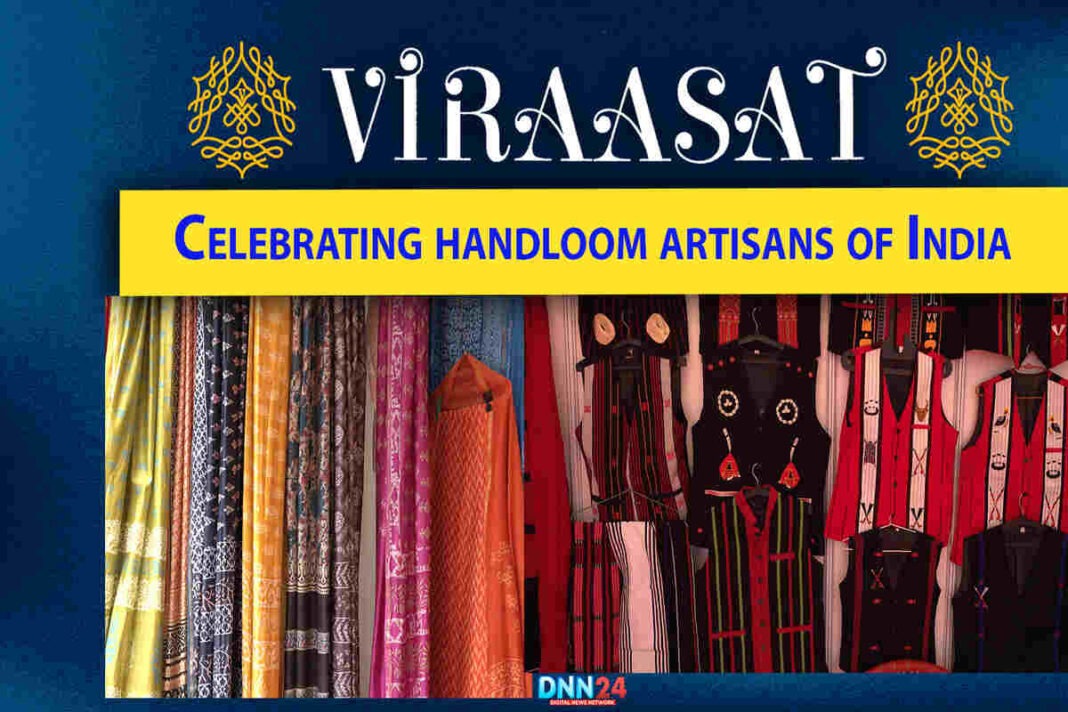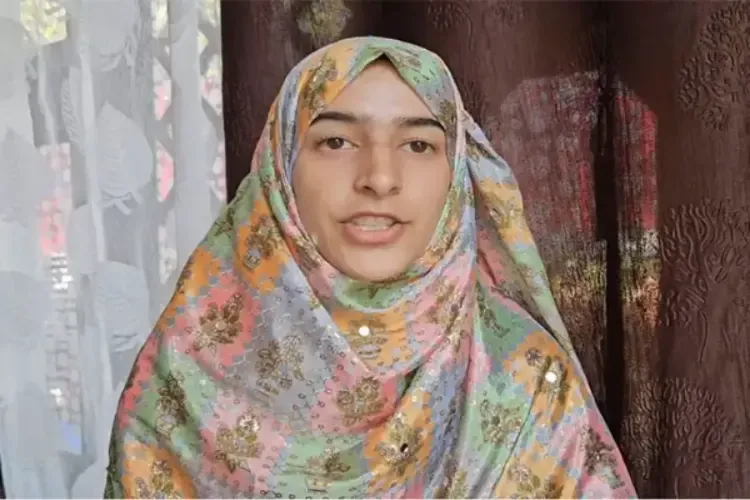India’s cultural heritage is a treasure trove of traditions, skills, and artistry passed down through generations. From ancient buildings to time-honored recipes, every aspect of Indian life reflects its rich history. One of the most significant elements of this heritage is the art of handloom weaving. This centuries-old craft has not only survived but thrived, adapting to modern times while preserving its essence. The Delhi Handloom Haat serves as a testament to this enduring tradition, attracting artisans from across the country to showcase their handloom sarees. These intricate pieces of wearable art represent more than just clothing; they embody the stories, skills, and cultural identity of the communities that create them. As we delve into the world of Indian handloom, we’ll explore the techniques, challenges, and the people behind this remarkable craft that continues to captivate hearts and minds across the globe.
The Art of Chanderi: A 7th Century Legacy
Chanderi sarees, originating from the 7th century, are a prime example of India’s handloom excellence. These exquisite sarees are entirely handcrafted, with designs meticulously incorporated by skilled artisans. The process is labor-intensive, often taking place in the weavers’ homes, making it a true cottage industry. This traditional method of production has remained largely unchanged for centuries, preserving the authenticity and uniqueness of each piece. Chanderi sarees are renowned for their lightweight feel, sheer texture, and subtle sheen, often featuring intricate zari work and delicate motifs. The craft’s longevity is a testament to its beauty and the dedication of its practitioners. As we explore the world of Chanderi, we’ll discover how this ancient art form continues to evolve, adapting to modern tastes while maintaining its core traditions and techniques.

The Intricate Process of Handloom Weaving
The creation of a handloom saree is a complex and time-consuming process that requires skill, patience, and attention to detail. A typical six-and-a-half-meter saree can take up to eight days to complete. The most challenging aspect is incorporating the design, which involves careful planning and execution. The warp, or the vertical threads, are particularly delicate and prone to breaking, adding to the difficulty of the weaving process. Artisans use a variety of tools and techniques to create the intricate patterns and textures that make each saree unique. One such technique involves threading individual strands through a pot with a hole in the center, a process known as “Chhath.” This meticulous work requires a steady hand and years of practice to master. Understanding these intricate processes helps us appreciate the true value of handloom sarees and the skill of the artisans who create them.
Preserving Heritage in the Modern Era
In today’s fast-paced world, traditional crafts like handloom weaving face numerous challenges. However, many artisans and communities are committed to preserving this vital part of India’s cultural heritage. By working from home, weavers maintain their independence and can pass their skills on to the next generation. This home-based approach also allows for greater flexibility and creativity in design and production. Despite the allure of factory-made textiles, handloom products continue to hold a special place in Indian culture, prized for their uniqueness and quality. Efforts are being made to adapt traditional designs to contemporary tastes, ensuring the relevance of handloom in modern wardrobes. By supporting handloom, consumers not only acquire beautiful, one-of-a-kind pieces but also contribute to the preservation of a centuries-old craft and the livelihoods of skilled artisans.
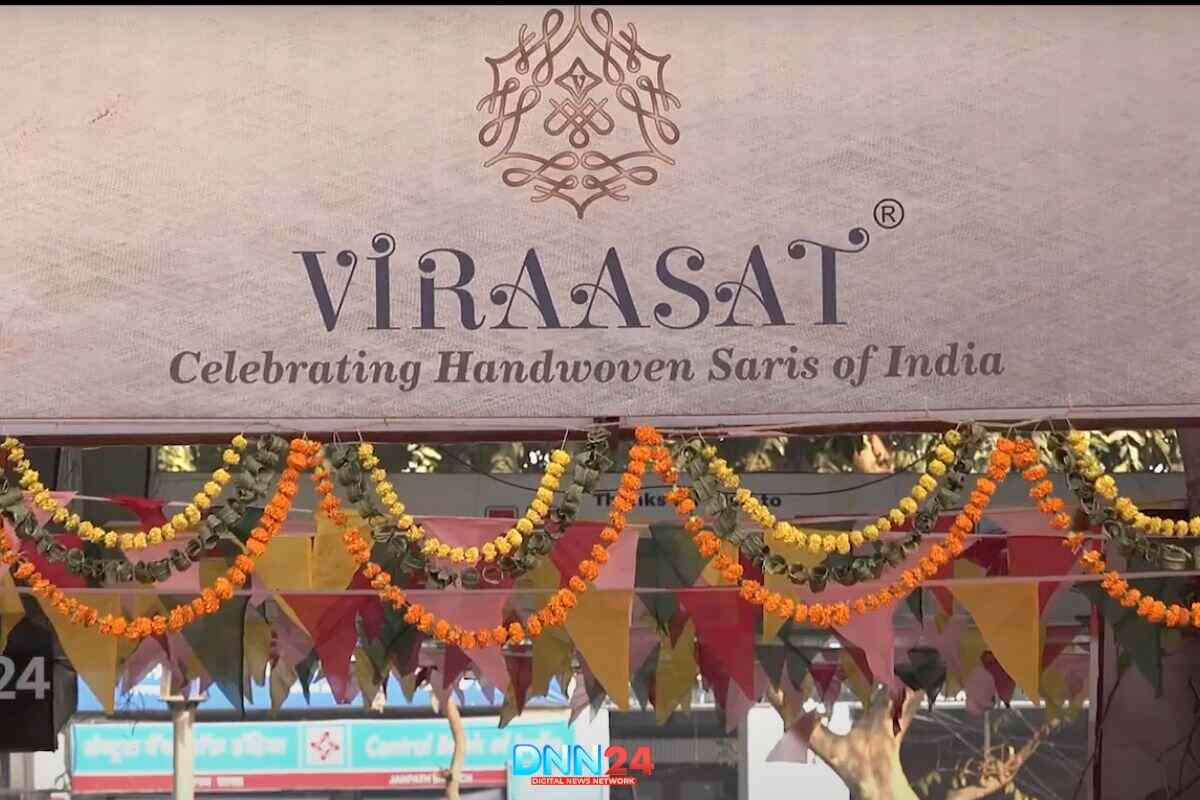
The Diversity of Indian Handloom: Tribal Textiles
India’s handloom sector is as diverse as its population, with each region and community contributing its unique styles and techniques. Tribal textiles, in particular, offer a fascinating glimpse into the rich cultural tapestry of India. These textiles often feature bold designs and vibrant colors, each with its own symbolic significance. For example, some tribes use primarily black and white in their textiles, reflecting their warrior heritage. Other tribal designs incorporate intricate patterns that tell stories of their history, beliefs, and way of life. The Phonga, Angami, and Mao tribes, among others, each have their distinct textile traditions. These tribal textiles not only serve as clothing but also as a means of preserving and expressing cultural identity. By studying and appreciating these diverse textile traditions, we gain a deeper understanding of India’s cultural richness and the importance of preserving these unique art forms for future generations.
The Orissa Handloom: A National Treasure
Orissa, now known as Odisha, is renowned for its exquisite handloom traditions, particularly the Ikat weave. The state’s weavers have received national recognition for their exceptional skill and artistry. One notable example is a saree that took three months to create and features 26 different types of flowers, aptly named “Upvanal.” This masterpiece earned its creators the prestigious National Award in 2004. Orissa handlooms are known for their intricate patterns, vibrant colors, and the use of techniques like double ikat, where both the warp and weft threads are tie-dyed before weaving. The “bomb” pattern and the innovative “Dolavedi” design, inspired by wedding palanquins, showcase the creativity and adaptability of Orissa’s weavers. These sarees are not just garments but works of art, each telling a story of tradition, skill, and cultural pride.
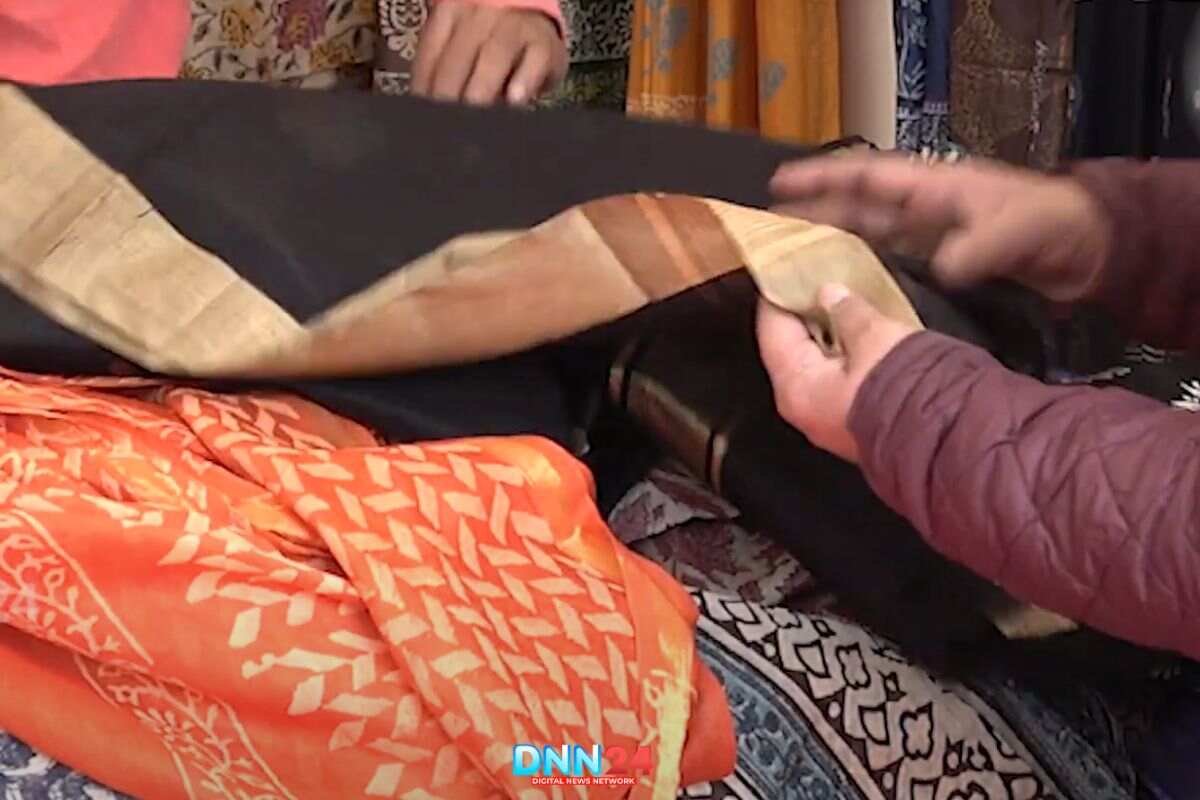
The Complexity of Ikat Weaving
Ikat, a dyeing technique used in many Indian handloom traditions, is particularly prominent in Orissa. This complex process involves tying and dyeing the threads before weaving, resulting in beautiful, blurred-edge patterns. The technique requires immense skill and precision, as the pattern must be carefully planned and executed on the threads before they are even placed on the loom. Different colors are achieved by dyeing sections of the thread separately, then aligning them perfectly during weaving to create the desired pattern. This process is so intricate that it can take up to three months to complete a single saree. The resulting textiles are known for their unique aesthetic, with patterns that seem to float on the fabric. The complexity of ikat weaving contributes to the high value of these textiles and underscores the remarkable skill of the artisans who create them.
The Economics of Handloom: Quality vs. Cost
One of the challenges facing the handloom sector is the perception of high costs. However, it’s essential to understand the factors contributing to the price of handloom products. The time, skill, and labor involved in creating a single piece justify its cost. For example, a basic cotton saree might cost 1,800 rupees, while an intricately designed piece could reach 12,500 rupees or more. The price reflects not just the materials used but also the weeks or months of skilled labor required to create each piece. Moreover, handloom products are often made with high-quality, natural materials and dyes, further adding to their value. While machine-made alternatives might be cheaper, they lack the uniqueness, quality, and cultural significance of handloom textiles. By understanding the true value of handloom, consumers can make informed choices that support this important cultural and economic sector.
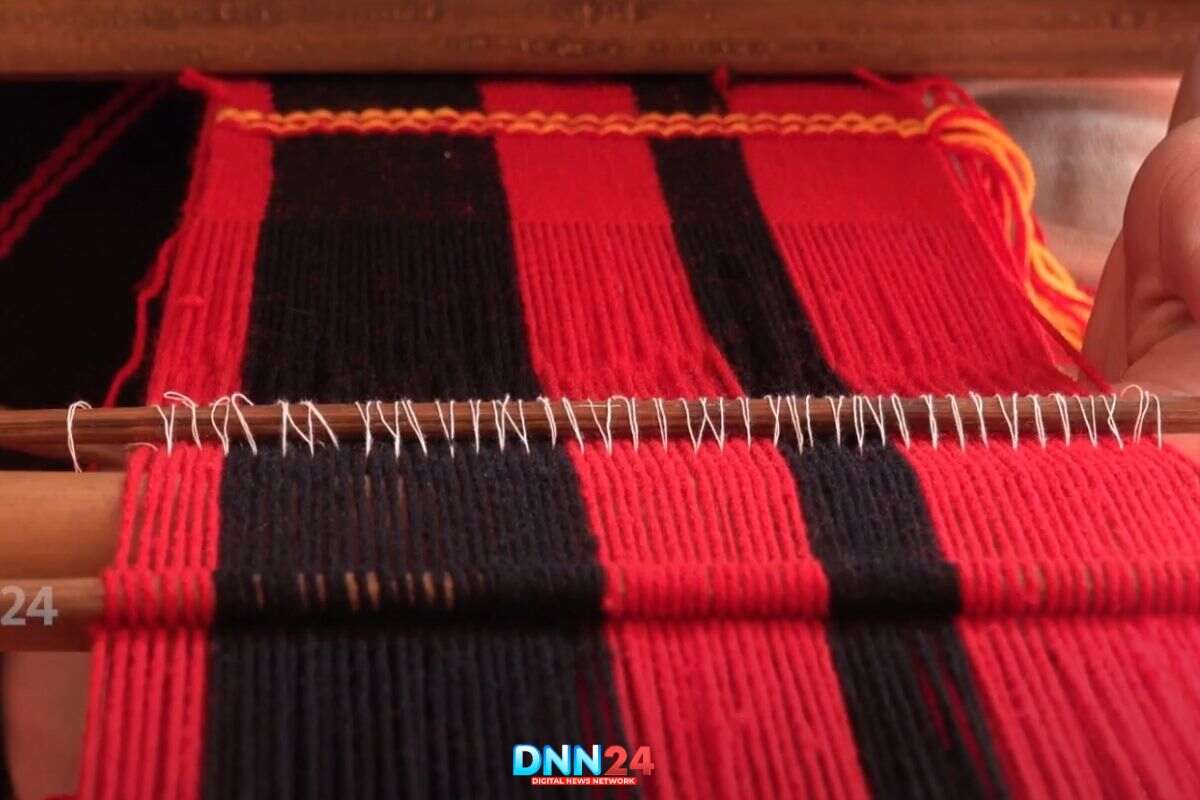
The Changing Face of the Handloom Industry
The handloom industry is facing significant changes as it adapts to modern times. Once a thriving sector with hundreds of weavers in each community, it now faces challenges in attracting younger generations to the craft. Many young people are drawn to other professions, leading to a decline in the number of skilled weavers. This shift has implications not only for the preservation of traditional skills but also for the economics of handloom production. With fewer weavers, the supply of handloom products has decreased, potentially driving up prices and making these items less accessible to the average consumer. However, this challenge also presents an opportunity for innovation in the sector, with some weavers and designers finding new ways to make handloom relevant and attractive to younger generations and international markets.
The Authenticity of Handloom: A Matter of Pride
In a market flooded with machine-made imitations, maintaining the authenticity of handloom products is a matter of pride for many weavers and sellers. Some handloom retailers, like the one featured in our story, take great pride in selling only genuine handloom products. They challenge anyone to find a single power loom piece in their collection, whether it’s a saree worth 1,800 rupees or 40,000 rupees. This commitment to authenticity not only preserves the integrity of the craft but also ensures that consumers receive genuine, high-quality products. It’s a testament to the enduring value of handmade textiles in a world increasingly dominated by mass production. By choosing authentic handloom products, consumers support not just a product, but a centuries-old tradition and the livelihoods of skilled artisans.

The Future of Indian Handloom: Challenges and Opportunities
As we look to the future, the Indian handloom sector faces both challenges and opportunities. While the number of weavers may be declining, there’s a growing appreciation for handmade, sustainable, and culturally significant products both in India and globally. This presents an opportunity for the handloom sector to reinvent itself, adapting traditional techniques to contemporary designs and reaching new markets. Efforts are being made to provide better working conditions, fair wages, and social security to weavers, making the profession more attractive to younger generations. Additionally, initiatives to promote handloom products through e-commerce platforms and fashion shows are helping to increase visibility and demand. The key to the future of Indian handloom lies in striking a balance between preserving traditional techniques and embracing innovation, ensuring that this vital part of India’s cultural heritage continues to thrive in the modern world.
Also Read: Sunil Jaglan: Change Maker of Gender Equality in Rural India
You can connect with DNN24 on Facebook, Twitter, and Instagram and subscribe to our YouTube channel.

